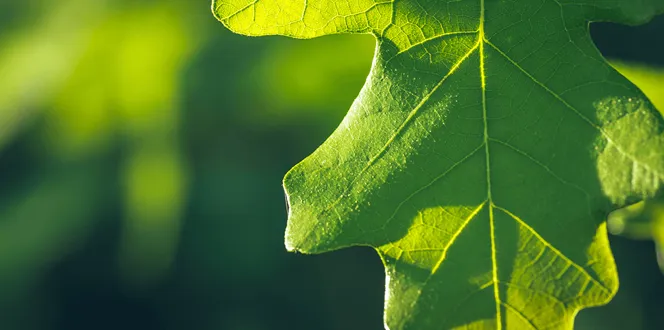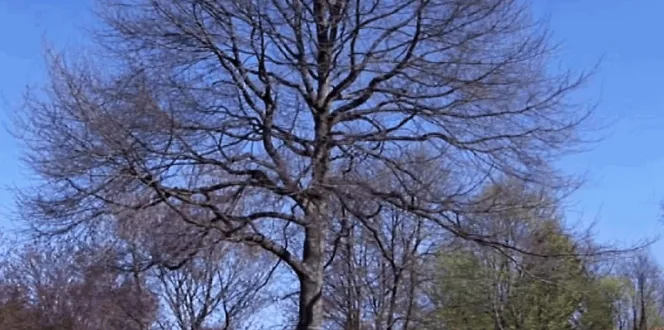Oak trees are the majestic kings of the forest.
As some of the toughest, tallest trees in the world, oak trees live long lives and many ecosystems depend on them for animal survival and habitat.
But since there are more than 600 oak species in existence – with approx. 100 of those in the U.S. – identifying whether you have an oak tree and which one you have can be challenging.
Think you have an oak tree in your yard or maybe you’d like to plant one? Let’s explore some oak tree identification tips to help you better recognize these landscape giants.
How To Identify An Oak Tree
The robust oak tree has a massive presence in your landscape.
But oak tree identification starts by looking at some of the smaller pieces of the tree to confirm its species.
Oak Tree Leaves
Oak tree identification by leaves is the perfect first step in recognizing this tree type because their leaves are usually distinctive.
Some species have leaves that are lobed and dark green on top and the underneath color can change by species, ranging from white to reddish to blackish in color. Others have leaves that are entire with no lobes.
Two common varieties – red and white oaks – have some leaf differences that can help you tell them apart. White oak leaves have rounded tips, while red oak leaves have pointed tips.
Oak Tree Bark
When it comes to oak tree bark identification, you’re looking for bark that’s brown or scaly, and hard sometimes with deep ridges and grooves.
Oakwood is dense and durable; it’s been used to build homes and floors, ships and even wine barrels.
Oak Tree General Characteristics
Where to plant: Oak trees prefer well-drained soil.
- Height/spread: Oaks grow slow and live long. Different types of oak trees will have different growth expectations. White oaks can reach 60 to 100 feet high with a 50- to 90-foot spread. Red oaks can reach a height of 60 to 70 feet with a 40- to 60-foot spread. Live oaks can reach 40 to 60 feet in height with a 60- to 100-foot spread.
- Sunlight: To thrive, oak trees need full sun. When grown in shade, oak trees may grow slowly or not thrive.
- Best time to prune: Winter – outside of an oak tree’s active growth cycle – is the best time for pruning. If at all possible, avoid trimming during oak wilt season from April through November.
- Deer resistance: Deer do like oaks but they prefer white oaks over red oaks.
Types Of Oak Trees
White oak – White oaks have long, lobed leaves with curved edges that turn red or burgundy in the fall. They tend to have softer bark with deeper ridges than other oaks. Their acorns are light brown. Types of white oaks include bur, swamp, chinkapin, and post oaks.
Red oak – Red oaks have pointed lobes with small bristles at the tips of each one. They have dark brown bark with brownish ridges and darker colored acorns. Common red oaks include willow and pin oaks.
Potential Threats
These are some common threats to different types of oak trees that you may want to watch for as you care for your beloved oak tree.
- Oak Decline – This issue can impact mature red and white oaks. It typically shows up in the progressive dieback of crowns, starting from outer limbs and moving inward as the decline progresses, potentially over several years. Invasive pests and soil compaction are typically to blame. Pruning damaged or diseased limbs; taking proper care of trees; avoiding damage to tree limbs, trunks, and roots; and monitoring trees for insects and diseases can help. Talk to a certified licensed arborist for proper diagnosis and treatment.
- Oakworm Caterpillars – Oakworms feed on new leaves in spring. Big groups of these insects can devour leaves. A certified licensed arborist can help you stop oak worm caterpillars early with proper treatment.
- Oak Wilt – This dangerous and deadly fungus blocks the flow of water inside of trees, causing leaf browning, premature leaf drop, and tree decline. An inspection by a certified arborist can help you properly identify and create a plan of attack for this disease.
- Oak Leaf Blisters – These blisters will result in raised spots scattered on oak leaves. Underneath, leaves will feel indented. While not pleasant in appearance, proper tree care can help trees bounce back.
- Oak Leaf Galls – Galls are abnormal growths that appear on trees from insect or mite infestations. They can cover tree leaves and sometimes branches. Though it doesn’t look good, adequate tree care can help manage this problem.







